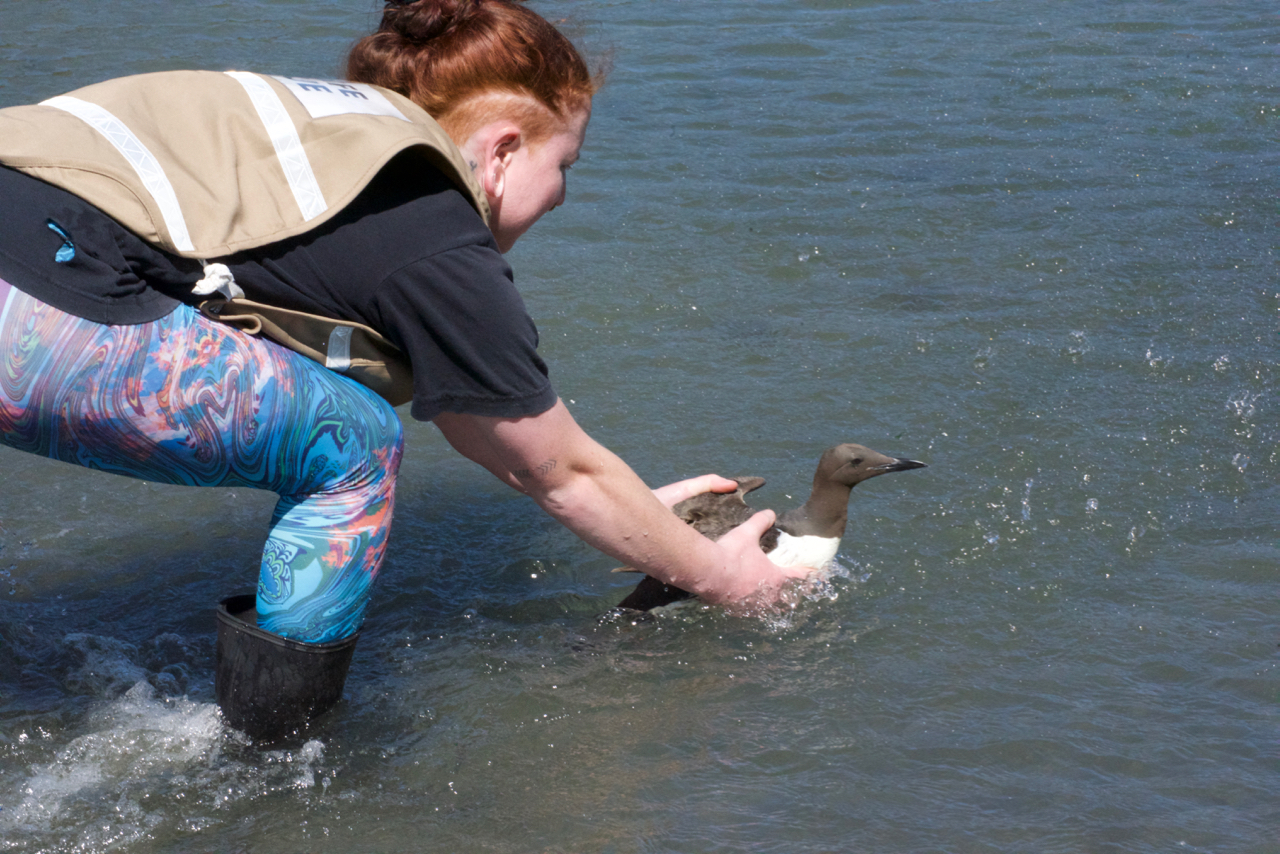
A very short article written by HWCC director and BAX co-founder Monte Merrick, 18 years ago while working at a wild bird hospital in Los Angeles…
“How does it feel when a bird you are trying to save dies?”
Asking this was a young girl in the back row of a group of students visiting the center. It was the last question of the morning.

Fourth and fifth graders, they’d sat attentively while I examined a juvenile Black-crowned Night Heron. They’d groaned while I debrided the seal bite wound on the chest of a Brown Pelican. I told them about the care each bird would receive and what the antibiotics that were administered were intended to fight and how we would ensure that all of the birds’ nutritional needs were met. Through all of our interactions the birds and I were separated from the children by a glass wall, headphones and a public address system. Behind me a television screen monitored from a distance the pools and aviaries where our patients are housed.
As I examined the heron I felt along the length of each of his limbs and described why I needed to “palpate” for any thing that might indicate a fracture or a dislocation. I explained that palpate means feel.
Although the kids and I had fun during the demonstration, everything was kept professional and sanitary and distant – just as it should be. After all we are not here to cuddle the birds or terrify them. Only briefly, to administer the medications, did I uncover the heron or the pelican’s head. After finishing the birds’ care I stood behind the glass and listened through the headphones to the kids’ questions, – about animal bites and the number of patients and how we find the birds. My voice answered through speakers that I could not exactly hear.
One of the first skills we acquire when entering wildlife rehabilitation is a new vocabulary. Medical terminology is used for every procedure. The tests that we perform, such as fecal analysis and blood work, are described in purely scientific terms. As with the distance we respectfully maintain between ourselves and our patients, this is as it should be. Consistent care requires consistent results, which is why the protocols of science were developed in the first place.

But the last question was a curve ball. Clinical language was of no use. Palpate, in this situation, does not mean feel. Now I thought only of the eyes of a Double-crested Cormorant that I cared for a few years ago. They were emeralds on a black velvet cloth. They were old and new and ablaze and dying. Each day for three days her attitude declined. She stopped eating. It was decided that she should be euthanized and that third day I went to her cage to catch her up. She was lying on her back next to the ramp to the kiddie pool that held her untouched smelt. She was already dead.
As we all know, no matter what our experience, no matter how many times this happens, when an animal dies we are horrified. Finding a bird dead in their housing is always a shock, no matter how poor the prognosis may have been.
I answered the young girl’s question as best as I could. I told her that we try very hard to provide the best care we can. I told her that every death was sad but also an opportunity to learn more so that the next patient might benefit. I told her what I had always been told by my teachers – I told her that each of our patients would have certainly died had we not intervened.
Committing to the care of a bird is an emotional commitment, not a clinical one, and the sadness of death is not eased by exposure – in fact it is the great privilege of our work that we get as close to death as regularly as we do. Death becomes more personal, more real, the more it is witnessed. While the language and protocols of medicine make it possible to provide the highest quality care, it is the language of the heart that describes why anyone might feel the need to do so.
*************
Nearly two decades later, the protocols have changed – which is how protocols work – changeable with new information. But the motivation to care for our patients is the same – love, as the songs all know, is forever.

2020 is a long way from 2003, when the article above was written. But our needs in wildlife care are also the same. And it will always be true that your support is what makes our work possible. Please donate today!

